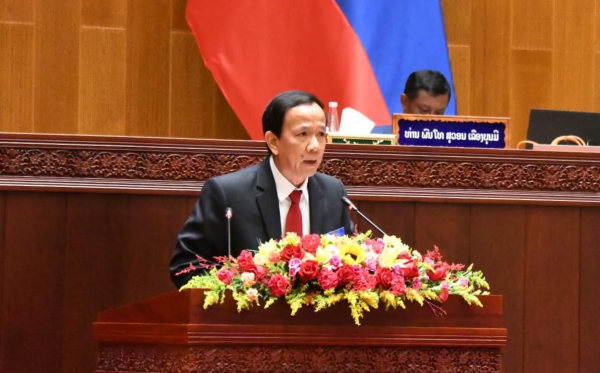KPL
On November 17, the recovery of unlawfully obtained state assets remains low despite significant corruption inspections, according to a senior official at the Party Central Inspection Committee. Speaking during the 10th Ordinary Session of the 9th Legislature of the National Assembly, Mr. Soukkhamphet Heuangbouthsy, Vice President of the committee, responded to questions regarding the performance of Laos’ State Inspection Authority and proposed new enforcement measures.

(KPL) On November 17, the recovery of unlawfully obtained state assets remains low despite significant corruption inspections, according to a senior official at the Party Central Inspection Committee. Speaking during the 10th Ordinary Session of the 9th Legislature of the National Assembly, Mr. Soukkhamphet Heuangbouthsy, Vice President of the committee, responded to questions regarding the performance of Laos’ State Inspection Authority and proposed new enforcement measures.
The session, chaired by Vice President of the National Assembly Mr. Sommad Pholsena, heard Mr. Soukkhamphet admit that despite identifying numerous cases, “the recovery of assets for the State remains low due to many factors.”
He attributed delays largely to the time required to move from inspection to enforcement. “Once a case is identified, it often takes years to see real corrective action,” he said, stressing that the leadership of implicated organizations must take responsibility for following through on inspection findings.
One major challenge, Mr. Soukkhamphet explained, is the classification of assets unrelated to the corrupt act. “Previously, we considered assets acquired before corruption to be non-recoverable and therefore returned to the offenders,” he noted. “This approach has limited recovery and needs reconsideration.”
He pointed out that much of the embezzled money had been spent on luxury assets including land, houses, and vehicles or wasted on online gambling and excessive consumption.
Proposed Solutions
To improve asset recovery, Mr. Soukkhamphet proposed the following measures:
Use of Joint Assets: Marital property belonging to the offender, even if shared with a spouse, should be used for compensation.
Seizure of Original Assets: If joint assets are insufficient or unavailable, the offender’s personal assets prior to marriage should be seized.
Spousal Liability: In cases where the spouse is identified as the offender, shared assets should be recovered.
“These measures, if enforced thoroughly, will significantly reduce corruption in the future,” he concluded.
KPL